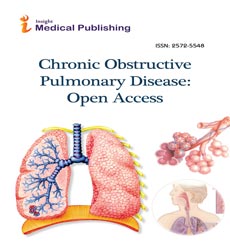Role of TRPV4 calcium-permeable channel in atherogenesis
CO-ORGANIZED EVENT:International Conference on Chronic Diseases & 6th International Conference on Microbial Physiology and Genomics
August 31-September 01, 2017 Brussels, Belgium
Shaik O Rahaman
University of Maryland, USA
ScientificTracks Abstracts: Chron Obstruct Pulmon Dis
DOI: 10.21767/2572-5548-C1-002
Abstract
Cardiovascular disease is the number one cause of death in the developed world, and atherosclerosis, a chronic inflammatory arterial disease, is the most dominant underlying pathology. Macrophages are thought to orchestrate atherosclerosis by generating lipid-laden foam cells and by secreting inflammatory mediators. Emerging data support a role for a mechanical factor, e.g., matrix stiffness, in regulation of macrophage function, vascular elasticity, and atherogenesis. However, the identity of the plasma membrane mechanosensor and the mechanisms by which pro-atherogenic signals are transduced are unknown. Published work by our group and others showed that TRPV4, an ion channel in the transient receptor potential vanilloid family, a known mechanosensor, is activated by a range of mechanical and biochemical stimuli. We have obtained evidence that: genetic ablation of TRPV4 or inhibition of TRPV4 activity by a specific antagonist blocked oxidized low-density lipoprotein (oxLDL)-induced macrophage foam cell formation, a critical process in atherogenesis, and TRPV4 deficiency prevented matrix stiffness-induced exacerbation of oxLDL-induced foam cell formation. Mechanistically, we found that: plasma membrane localization of TRPV4 was sensitized to the increasing level of matrix stiffness; lack of foam cell formation in TRPV4 deficient macrophages was not due to lack of expression of CD36, a major receptor for oxLDL and; TRPV4 channel activity regulated oxLDL internalization but not its binding on macrophages. Altogether, these findings identify a novel role for TRPV4 in regulating macrophage foam cell formation by modulating internalization of oxLDL. These findings suggest that therapeutic targeting of TRPV4 may provide a selective approach to the treatment of atherosclerosis.
Biography
Shaik O Rahaman is an Assistant Professor at University of Maryland, USA. He is interested in elucidating the signaling events underlying the pathogenesis of atherosclerosis and fibrosis. He completed his PhD in Molecular Biology at Jadavpur University, and a BS in Human Physiology (Honors), and an MS in Biophysics and Molecular Biology at University of Calcutta. From 2000-2014, he worked at Cleveland Clinic, Cleveland, USA, as a Postdoctoral Fellow, eventually as a Project Scientist and Assistant Professor. In 2013, he was the recipient of the American Heart Association Scientist Development Grant. He is the author or co-author of 21 research papers in high impact international peer-reviewed journals of repute. He has given numerous invited talks nationally and internationally.
Google Scholar citation report
Citations : 130
Abstracted/Indexed in
- Google Scholar
- China National Knowledge Infrastructure (CNKI)
- Publons
- Geneva Foundation for Medical Education and Research
- Secret Search Engine Labs
Open Access Journals
- Aquaculture & Veterinary Science
- Chemistry & Chemical Sciences
- Clinical Sciences
- Engineering
- General Science
- Genetics & Molecular Biology
- Health Care & Nursing
- Immunology & Microbiology
- Materials Science
- Mathematics & Physics
- Medical Sciences
- Neurology & Psychiatry
- Oncology & Cancer Science
- Pharmaceutical Sciences

